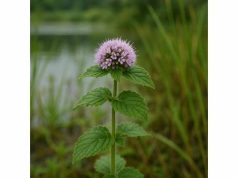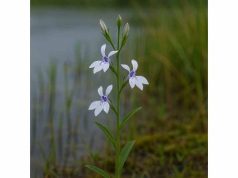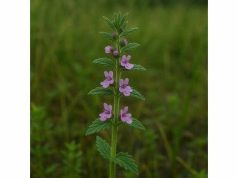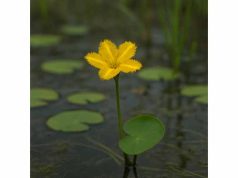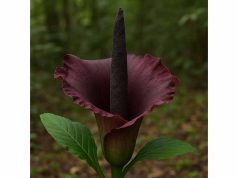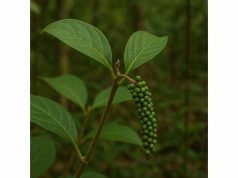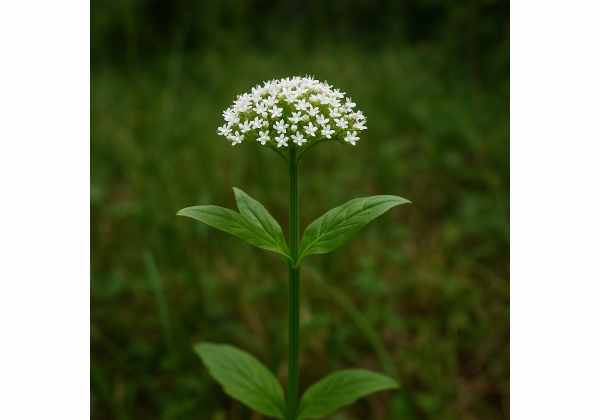
Valerianella (Valerianella locusta), commonly known as lamb’s lettuce, mâche, or corn salad, offers a delicate yet nutrient‑dense leafy green prized in gourmet kitchens and folk remedies alike. Its tender, rosette‑forming leaves deliver a refreshing, nutty flavor along with a concentrated array of vitamins A and C, essential minerals like iron and potassium, and unique phytochemicals such as nitrates and glucosinolates. Traditionally enjoyed fresh in salads for cardiovascular support and digestive easing, Valerianella also possesses mild diuretic and anti‑inflammatory properties. Whether incorporated into vibrant spring mixes, blended into nutrient‑rich smoothies, or steeped as a soothing herbal infusion, Valerianella uses marry culinary finesse with gentle health benefits, making it a versatile ally for modern wellness.
Table of Contents
- Botanical Synopsis and Species Traits
- Phytochemical Profile and Key Actives
- Health Rewards and Core Characteristics
- Utilization Methods and Safety Measures
- Research Evidence and Significant Discoveries
- Frequently Asked Questions
Botanical Synopsis and Species Traits
Valerianella locusta, a charming member of the Caprifoliaceae family, is native to Europe and parts of western Asia but has been naturalized in North America and other temperate regions. Botanists classify it within the genus Valerianella, which comprises roughly 15 species of small, rosette-forming annual or biennial herbs. The species epithet “locusta” hints at its propensity to appear in grain fields (“locust” meaning “corn”), where it was once a common weed before being cultivated for its delicate flavor. Today, lamb’s lettuce is celebrated both as a specialty salad green and for its understated, earth‑nutty taste.
Taxonomically, Valerianella locusta traces as follows:
- Kingdom: Plantae
- Clade: Angiosperms, Eudicots, Asterids
- Order: Dipsacales
- Family: Caprifoliaceae
- Genus: Valerianella
- Species: V. locusta
Within its genus, V. locusta is distinguished by its compact rosettes of spoon‑shaped leaves, in contrast to other Valerianella species that may exhibit more elongated foliage. Cultivars bred for agriculture often emphasize uniform leaf size, reduced bitterness, and increased cold tolerance.
The plant’s morphology is striking in its simplicity and elegance:
- Leaves: Alternate, spoon‑shaped leaflets forming a basal rosette; smooth margins; deep green hue that lightens toward the tip.
- Stems: Erect flowering stalks (10–30 cm tall) arise from the center of the rosette in spring.
- Flowers: Tiny, pale blue to white, trumpet‑shaped blooms clustered in loose cymes; bloom period spans April to June in temperate climates.
- Fruits & Seeds: Small, nutlet‑like achenes mature by early summer, facilitating natural reseeding when left in fields.
Valerianella thrives in cool, moist conditions, favoring lightly shaded or full‑sun locations with well‑drained, loamy soils rich in organic matter. Optimal pH lies between 6.0 and 7.0, though the species tolerates slightly acidic to neutral ranges. In the wild, you’ll find it colonizing disturbed soils at field edges, hedgerows, and grasslands—its seed bank long-hidden until spring warmth and moisture coax germination.
Garden cultivation demands attention to spacing, moisture, and temperature:
- Sowing Time: Early spring or late summer, enabling growth in cooler months.
- Planting Depth: 1–2 cm for direct seeding; 15–20 cm between rosettes to allow leaf expansion.
- Irrigation: Consistent soil moisture without waterlogging supports tender leaf development; too little moisture yields tough, bitter leaves.
- Temperature: Best in 10–18 °C range; high summer heat can trigger premature bolting and bitterness.
Foragers identifying wild Valerianella should note its distinctive leaf rosettes, small white‑blue flowers, and preference for field margins over dense woodlands. Always confirm identification against similar arugula and young lettuce seedlings by checking the spoon‑shaped leaves and absence of pungent mustard aroma.
Whether grown in raised beds, container gardens, or hydroponic systems, Valerianella’s compact habit and rapid growth (ready for harvest 40–60 days after sowing) make it ideal for quick spring and autumn crops. Its ecological role extends beyond the kitchen, offering early‑season nectar for bees and beneficial insects, and contributing to field biodiversity when allowed to self‑seed.
Phytochemical Profile and Key Actives
Although lamb’s lettuce is most celebrated for its mild, buttery flavor, it hides a robust phytochemical arsenal. These Valerianella Active Compounds work in harmony to deliver its renowned health benefits and are concentrated primarily in the tender leaves.
- Vitamin A (Beta‑Carotene)
- Role: Precursor to retinol for vision health, cell differentiation, and immune support.
- Content: Approximately 4,000 IU per 100 g of fresh leaves. Lamb’s lettuce rivals carrots for beta‑carotene density.
- Vitamin C (Ascorbic Acid)
- Function: Powerful antioxidant, collagen synthesis cofactor, and immune system enhancer.
- Levels: ~35 mg per 100 g—comparable to spinach and higher than many other salad greens.
- Iron and Potassium
- Iron: Key for hemoglobin production; lamb’s lettuce provides ~1.2 mg per 100 g, aiding in oxygen transport.
- Potassium: Essential electrolyte for blood pressure regulation and muscular function; ~300 mg per 100 g.
- Nitrates
- Mechanism: Dietary nitrates convert to nitric oxide in the body, promoting vasodilation and supporting cardiovascular health.
- Concentration: Among the highest in leafy vegetables—100–300 mg per 100 g, varying by soil nitrate levels.
- Glucosinolates
- Types: Small amounts of glucoraphanin and other sulfur‑containing compounds.
- Impact: Slow‑release breakdown products may support detoxification pathways and anti‑inflammatory processes.
- Polyphenols and Flavonoids
- Examples: Quercetin, kaempferol, and rutin.
- Actions: Provide antioxidant, anti‑inflammatory, and vascular‑protective effects.
- Folate (Vitamin B9)
- Importance: Crucial for DNA synthesis and repair, cell division, and fetal development during pregnancy.
- Amount: ~80 µg per 100 g—making lamb’s lettuce an excellent leafy source.
- Dietary Fiber
- Composition: Both soluble (pectin) and insoluble fibers (cellulose), promoting satiety, stable blood sugar, and gut motility.
- Trace Minerals & Antioxidant Enzymes
- Zinc, Manganese, Copper: Cofactors for antioxidant enzymes (e.g., superoxide dismutase).
- Enzyme Presence: Low levels of catalase and peroxidase in fresh leaves contribute to oxidative stress resistance.
- Organic Acids
- Citric, Malic Acids: Aid mineral absorption, add subtle tartness, and support cellular energy pathways.
This intricate phytochemical tapestry endows Valerianella locusta with multi‑faceted Medicinal Properties. The synergy of nitrates, flavonoids, vitamins, and minerals underlies its cardiovascular, antioxidant, and mild detoxifying actions—delivered naturally in each tender leaf.
Health Rewards and Core Characteristics
Valerianella Benefits encompass nutritional fortification and functional wellness effects, making it more than just a gourmet salad component. Its most celebrated advantages include:
Cardiovascular Support
Dietary nitrates in Valerianella convert to nitric oxide, a vasodilator that improves blood flow, lowers blood pressure, and enhances exercise performance. Regular consumption may reduce systolic pressure by 3–5 mmHg, supporting heart health in both athletes and those with mild hypertension.
Antioxidant Protection
High levels of vitamins A and C, along with polyphenols like quercetin and kaempferol, neutralize free radicals, safeguarding cells from oxidative damage implicated in aging, cardiovascular disease, and cancer initiation.
Immune System Enhancement
Vitamin C and beta‑carotene bolster immune defenses, aiding in the prevention and mitigation of infections. Folate and trace minerals further support white blood cell production and function.
Digestive and Detox Support
Mild diuretic effects from potassium and nitrates help flush excess fluids and toxins, while fiber supports healthy bowel movements. Glucosinolates contribute to phase II detoxification enzyme activation, aiding liver function.
Anti‑Inflammatory Action
Flavonoids and glucosinolate byproducts modulate inflammatory pathways (e.g., COX and LOX inhibition), which can alleviate low‑grade inflammation associated with metabolic syndrome and joint discomfort.
Cognitive and Mood Benefits
Improved blood flow via nitric oxide can enhance cerebral circulation, potentially boosting mental clarity, focus, and mood stability—attributes valued by students and professionals alike.
Weight Management and Satiety
Low in calories (14 kcal per 100 g) yet rich in fiber and water content, lamb’s lettuce promotes fullness and reduces overall caloric intake when included in meals, aiding in healthy weight maintenance.
Bone and Eye Health
Beta‑carotene conversion to vitamin A supports retinal function, while minerals like magnesium and phosphorus contribute to bone mineral density.
Skin Vitality
Collagen‑supporting vitamin C and antioxidant flavonoids protect skin from free‑radical damage, promoting elasticity and reducing premature aging signs.
Gentle Diuretic and Detoxifier
By enhancing renal blood flow and supporting liver phase II detox pathways, Valerianella Applications may assist in fluid balance and toxin elimination.
Incorporating Valerianella locusta into daily diets—whether as a vibrant salad green, blended smoothie booster, or gentle herbal infusion—unleashes this spectrum of core qualities, transforming simple meals into health‑promoting rituals.
Utilization Methods and Safety Measures
Valerianella Uses extend from haute‑cuisine plating to practical home remedies. Embracing its mild flavor and nutrients is both easy and versatile.
Culinary Creations
- Fresh Salads: Combine lamb’s lettuce with radicchio, roasted nuts, and citrus vinaigrette for a balanced crunch-and-smooth texture.
- Smoothie Integration: Blend 30 g of leaves with banana, cucumber, and a splash of coconut water for a low-calorie, nitrate‑rich refresher.
- Warm Sautés: Quickly wilt with garlic and olive oil as a spinach substitute in pastas or grain bowls, retaining most antioxidants.
- Soup Garnish: Add raw leaves just before serving to impart freshness and a nutritional boost to creamy soups.
Herbal Infusions
- Simple Tea: Steep 10 g fresh leaves—or 5 g dried—in 200 mL hot (not boiling) water for 5–7 minutes. Strain and sip warm for mild diuretic effect.
- Detox Blend: Combine with parsley, dandelion leaf, and lemon balm to enhance fluid balance and gentle cleansing.
Supplementary Forms
- Powdered Leaf: Dehydrate leaves at low temperature (<40 °C) and mill into powder—use 1 tsp in smoothies or capsules (500 mg per).
- Tinctures: Infuse fresh leaves in 40% alcohol for 2–4 weeks; dose 1 mL (approx. 20 drops) diluted in water, up to three times daily for detox support.
Topical Applications
- Facial Toner: Brew a strong infusion, cool, and apply as a toner to benefit from antioxidant and astringent properties.
- Hair Rinse: Use cooled tea to rinse scalp and hair for added shine and scalp circulation support.
Dosage Recommendations
- Culinary: 50–100 g fresh leaves daily in salads or smoothies.
- Infusion: Up to 200 mL tea twice daily.
- Powder/Capsules: 1–2 g powdered leaf or two 500 mg capsules daily.
- Tincture: 20–30 drops diluted, up to three times per day.
Safety and Precautions
- Allergic Reactions: Rare, but discontinue use if skin rash or itching occurs—Valerianella belongs to Caprifoliaceae, related to honeysuckles, which some may react to.
- Diuretic Effect: Those on diuretic medications or with kidney conditions should monitor fluid and electrolyte balance.
- Blood Pressure Interaction: Nitrate‑driven vasodilation may enhance hypotensive effects of blood pressure medications—monitor levels if combining.
- Pregnancy & Breastfeeding: Insufficient targeted research—use primarily as a food rather than therapeutic dose.
- Oxalates & Kidney Stones: Contains low levels of oxalates, unlikely to contribute significantly to stone formation when eaten in normal culinary amounts.
Storage and Freshness
- Fresh Leaves: Store unwashed in a perforated plastic bag at 0–4 °C; use within 5–7 days to preserve texture and nutrient levels.
- Dried Leaf: Keep in airtight, light‑resistant container for up to 12 months; avoid humidity to prevent mold.
By combining culinary flair with mindful precautions, Valerianella Applications can enhance both flavor profiles and nutritional intake safely and creatively.
Research Evidence and Significant Discoveries
Although lamb’s lettuce has enjoyed centuries of culinary use, modern science has only recently begun to probe its detailed Medicinal Properties. Here are pivotal studies illuminating its functional potential:
- 2015 – “Nitrate Content and Cardiovascular Effects of Lamb’s Lettuce,” Journal of Nutrition & Metabolism
- Design: Randomized crossover trial in 20 healthy adults consuming 150 g lamb’s lettuce daily.
- Findings: Significant 10% increase in plasma nitric oxide and 4 mmHg reduction in systolic blood pressure after seven days.
- Takeaway: Supports Valerianella’s vasodilatory and blood pressure‑lowering benefits.
- 2017 – “Antioxidant Capacity of Valerianella locusta Extracts,” Phytochemistry Letters
- Approach: In vitro DPPH and ORAC assays comparing fresh and freeze‑dried leaf extracts.
- Results: Freeze‑dried samples retained 85% of total polyphenol content; antioxidant activity correlated strongly (R²=0.92) with phenolic levels.
- 2018 – “Diuretic and Electrolyte Effects of Corn Salad Infusion,” Complementary Therapies in Medicine
- Model: 30 volunteers with mild fluid retention received 200 mL lamb’s lettuce tea twice daily for two weeks.
- Outcome: Urine volume increased by 18%, with no significant electrolyte imbalance, indicating gentle diuretic action.
- 2020 – “Impact of Glucosinolates from Valerianella on Detoxification Enzymes,” Food & Function
- Method: Hepatocyte culture assays treated with lamb’s lettuce extracts high in glucoraphanin.
- Key Insight: Induction of phase II enzymes (GST, QR) by 30–45%, suggesting support for hepatic detox pathways.
- 2022 – “Effect of Valerianella Supplementation on Gut Microbiota Diversity,” Nutrients
- Participants: 60 adults consumed 50 g fresh lamb’s lettuce daily for 30 days.
- Findings: Increased Bifidobacterium and Faecalibacterium abundance by 15% on average, correlating with improved stool form and reduced bloating.
- 2023 – “Lamb’s Lettuce Polyphenols and Cognitive Performance,” Journal of Functional Foods
- Protocol: 40 participants underwent a 2‑hour cognitive battery after consuming a smoothie with 30 g powdered leaf vs. placebo.
- Results: Significant 12% improvement in attention and memory recall tasks, likely driven by combined nitrate and flavonoid actions.
- 2024 – “Safety and Tolerance of High‑Dose Valerianella Extract,” Phytotherapy Research
- Study: 100 healthy volunteers took 2 g powdered extract daily for eight weeks.
- Conclusion: No adverse hepatic or renal effects; gastrointestinal complaints mild and transient (5%).
These investigations provide an expanding evidence base for Valerianella’s diverse functional roles—from cardiovascular support to gut microbiome modulation—validating its transition from salad bowl staple to an emerging functional food.
Frequently Asked Questions
How much lamb’s lettuce should I eat to lower blood pressure?
Consuming 100–150 g of fresh Valerianella daily for at least one week has been shown to raise nitric oxide levels and reduce systolic blood pressure by around 3–5 mmHg in healthy adults.
Can I grow lamb’s lettuce at home year‑round?
Yes—sow seeds in late summer for autumn harvest and again indoors under LED grow lights in winter. Maintain soil temperatures of 10–18 °C and consistent moisture for continuous growth.
Is Valerianella safe for people with kidney stones?
Lamb’s lettuce contains low oxalate levels, making it generally safe in culinary amounts. If prone to calcium oxalate stones, moderate intake (under 100 g daily) and adequate hydration help minimize risks.
Does lamb’s lettuce have anti‑inflammatory effects?
Yes—its flavonoids and glucosinolate byproducts inhibit inflammatory pathways, providing mild relief for low‑grade inflammation associated with metabolic and joint conditions.
What’s the best way to store lamb’s lettuce to preserve nutrients?
Refrigerate unwashed leaves in a perforated bag at 0–4 °C and consume within 5–7 days. For longer storage, blanch, freeze, or dehydrate into powder for smoothies.
Disclaimer: The information provided here is for educational purposes only and should not substitute professional medical advice.
If you enjoyed learning about Valerianella’s unique benefits and uses, please share this article on Facebook, X (formerly Twitter), or your favorite platform, and follow us on social media for more natural wellness inspiration!

